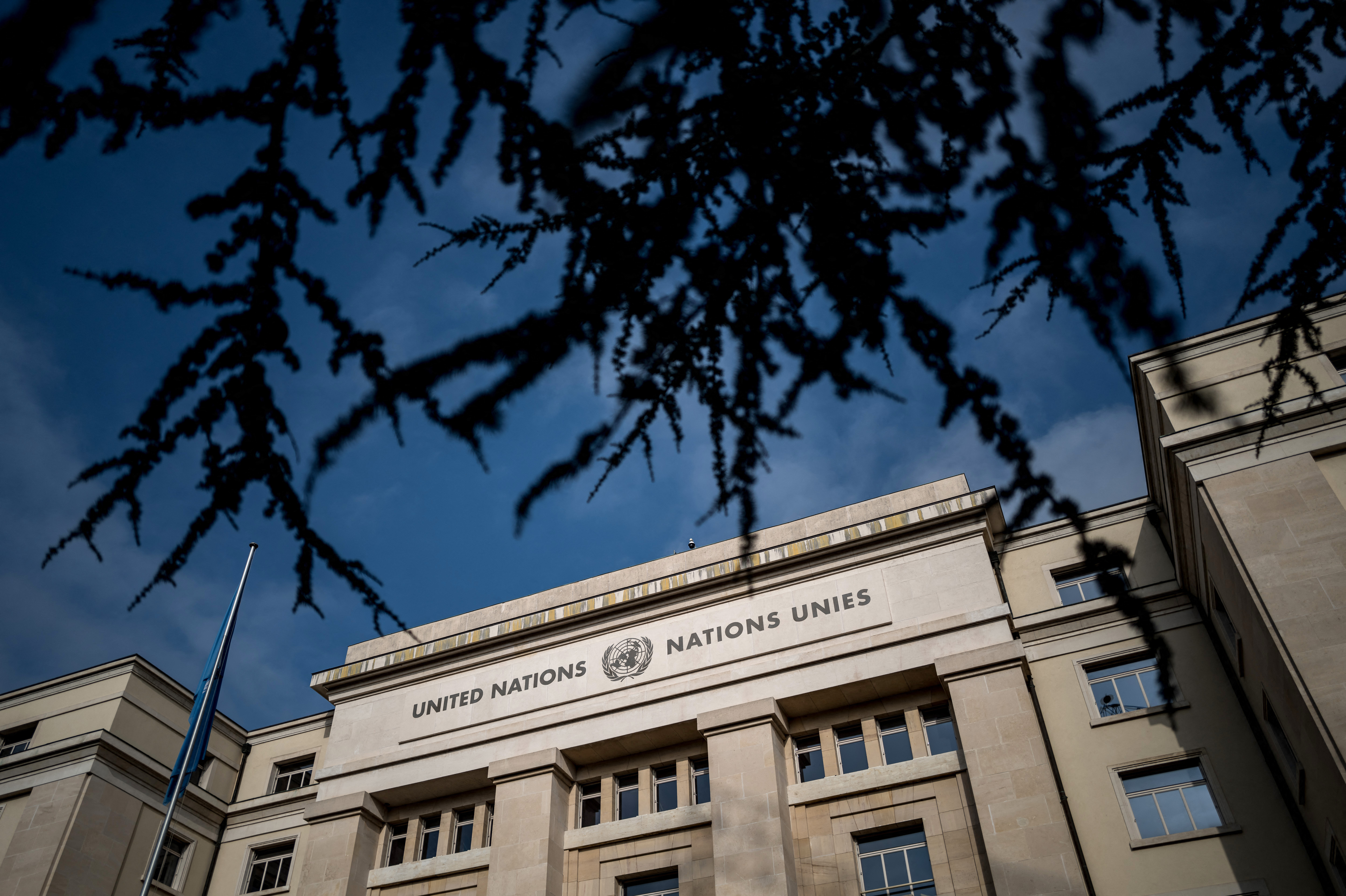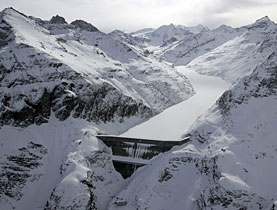Concrete giants open up to the public

Some 50 dams and hydropower plants are opening their doors on Saturday, including the 285-metre-high Grande Dixence dam, as part of the first Hydraulic Energy Day.
Alpiq, the largest Swiss utility company, says hydropower has a key role to play in the future and recently announced plans to invest SFr3 billion ($2.8billion) with partners. But some critics say hydropower has reached its full potential.
Thanks to its topography and high levels of annual rainfall, Switzerland has ideal conditions for the utilization of hydropower, which accounts for around 56 per cent of domestic electricity production – 38 billion kilowatt hours (KWh) per annum.
According to swisselectric, a body representing electricity grid firms, by 2035 the closure of a number of nuclear power stations, the end of several long-term electricity import contracts and rising consumption (two per cent annually) will result in an energy deficit of around 30 billion KWh.
To secure its long-term energy supply Switzerland adopted a strategy in 2007 based on energy efficiency, renewable energies – including hydropower – large gas-fired power plants and nuclear power, and energy imports.
Dams are popular destinations in Switzerland; every year some 120,000 people visit the Grande Dixence – the world’s tallest concrete gravity dam – and hydropower generally benefits from a positive image among the public, says the Swiss water board.
“But we found that many people are not aware of the importance of hydraulic power for the production of electricity in Switzerland,” declared its president, Caspar Baader.
The right time
According to Micheal Wider, head of Swiss Energy at Alpiq, ten per cent of Switzerland’s projected energy deficit – or three billion KWh – can still realistically be met via hydraulic power.
“This is essential but limited,” he told journalists on August 21.
Over the past 15 to 20 years uncertainties over the liberalization of the electricity market, environmental concerns and costs have been holding back the development of hydropower, say experts.
But Alpiq, born from the merger of EOS and Atel, and partners feel it is the right time to invest SFr2.4 billion in new hydropower facilities and SFr440 million in renovating existing infrastructure.
“Hydraulic energy has a central role to play, especially here, in the heart of Europe,” said Jörg Aberhard, head of hydropower at Alpiq.
Aquatic killer
But 50 years since the first big dams were built in Switzerland, hydropower remains controversial.
“We’ll always need this regulating energy from the dams,” said Marie-Therèse Sangra from environmental organisation WWF Switzerland. “But new requests for harnessing water or releasing water into free-flowing waterways through turbines are problematic for us.”
Existing facilities need to be managed in strict conformity with federal laws, leaving minimum water levels for aquatic life to survive and resolving the problem of water released “brutally” at peak hours that kills rivers, she noted.
“The potential for hydropower has more or less been reached, except for releasing drinking water or waste water through a turbine to generate power in a decentralised way,” she added.
Pump and store
As part of its latest plans Alpiq intends to invest SFr1 billion in a new pumped-storage hydroelectricity plant at Nant de Drance between the Emosson and Old Emosson dams in canton Valais. This will allow water to be pumped and stocked at altitude, offering an immediate, effective way of meeting drops in production.
But WWF criticises pumped-storage hydroelectricity, which it says can affect the environment and can result in up to a 30 per cent loss of energy.
Anton Schleiss, a professor of hydraulic construction at Lausanne’s Federal Institute of Technology (EFPL), agreed that around 90 per cent of Switzerland’s hydroelectric potential had been exploited, but said the capacity of the dams to produce peak energy could be enlarged.
“Switzerland has the advantage of being a mountainous region to produce peak energy and compensate wind and solar energy,” he explained. “It has the role of stabilizing the electricity grids in Europe.”
To boost capacity SFr20-30 billion needed to be invested over the next 15-20 years to adapt and renovate existing dams and power plants, many of which were built between the 1950s to 1970s, said the EFPL expert.
Simon Bradley, swissinfo.ch
Thanks to its topography and high levels of annual rainfall, Switzerland has ideal conditions for the development of hydroelectric power.
At the beginning of the 1970s, hydropower accounted for almost 90% of domestic electricity production, but this figure fell to around 56% after Switzerland’s nuclear power plants were commissioned, and has remained at that level since 1985.
But hydroelectric power remains Switzerland’s most important domestic source of renewable energy, equivalent to 38 billion kilowatt hours per year.
Total Swiss electricity production in 2004 was 63.5 TWh, of which hydropower accounted for 55% and nuclear energy 40%.
The Swiss electrical industry, while part of the European network, is largely self-sufficient.
However, Switzerland is a major trading centre, with annual electricity imports and exports often totalling up to ten times the European average.
Switzerland has 217 dams; 84% of which produce hydropower.
There are over 500 central hydropower stations, which can produce 13,314 MWh of power.
Four dams are over 200 metres high, namely the Grande Dixence (285 metres), Mauvoisin (250 metres), Luzzone (225 metres) and Contra (220 metres).
The oldest dams date back to the 19th century, though most of the biggest dams in Switzerland were built between 1950 and 1970.
In December 2000 production was put on hold at the Grande Dixence after a high-pressure pipeline from the dam burst, causing a landslide that wiped out a small hamlet and killed three people.
Subsequent investigations showed that the welding carried out by a contractor had failed, releasing thousands of cubic metres of water.
After almost ten years of work at a cost of SFr365 million, tests started on the pipeline in August 2009. The pipeline should be ready at the start of 2010 and will be able to produce an additional 1,200 megawatts of electricity.

In compliance with the JTI standards
More: SWI swissinfo.ch certified by the Journalism Trust Initiative












You can find an overview of ongoing debates with our journalists here . Please join us!
If you want to start a conversation about a topic raised in this article or want to report factual errors, email us at english@swissinfo.ch.